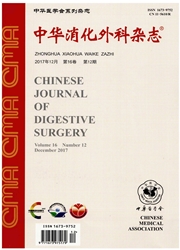

 中文摘要:
中文摘要:
肝胆管结石病目前仍是我国常见和多发的胆道疾病,其发病机制不明确,长期疗效欠佳。手术是唯一可能根治肝胆管结石病的手段,但术后复发率高,再次和多次手术仍然困惑着医师和患者。相关的胆管炎、肝脓肿、肝硬化及胆管细胞癌问题反映了该疾病的危害性。Oddi括约肌在控制胆汁排放、防止肠内容反流上作用关键。Oddi括约肌功能障碍与胆道疾病关系密切,这包括Oddi括约肌的痉挛、狭窄和松弛。松弛的Oddi括约肌可加剧胆肠反流,诱发胆道感染,导致结石发生和发展。近年来该问题越来越得到广大学者的重视。但如何评估和恢复异常的Oddi括约肌功能,以治疗和防止肝胆管结石的复发仍有许多未知。
 英文摘要:
英文摘要:
Hepatolithiasis is still a common biliary disease in China with unknown pathogenesis and poor long-term outcomes. Surgery is probably the only curative treatment to hepatolithiasis. However, surgeons and patients cannot keep trouble from high recurrence and reoperation rates after surgery. Hepatolithiasis is a serious disease, which can cause cholangitis, liver abscess, liver cirrhosis, and even cholangioearcinoma. Sphincter of Oddi, which controls the unidirectional outflow of bile and separates the bile duct from the bacteria-filled intestinal tract, is thought to be a gatekeeper of the almost-sterile biliary tract. Dysfunction of sphincter of Oddi, including stenosis, spasm and laxity, is closely associated with biliary disease. A lax sphincter of Oddi will aggravate bilioenteric reflux, leading to biliary infection and calculi development eventually. This issue has gradually gained enough attention. How to evaluate sphincter of Oddi function reliably and restore or replace its function, which is key to treat hepatolithiasis and prevent its recurrence, remain unclear.
 同期刊论文项目
同期刊论文项目
 同项目期刊论文
同项目期刊论文
 期刊信息
期刊信息
